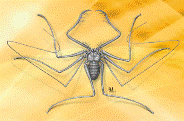Papers in the Biological Sciences

Eileen Hebets Publications
Document Type
Article
Date of this Version
4-2010
Abstract
Our goal in this essay is to review the hypothesis that females choose mates by the evaluation of male motor performance. We define motor performance as vigor, the ability to perform energetically expensive acts repeatedly, or as skill, the ability to perform difficult motor tasks well. Motor performance reflects most aspects of whole-organism performance that relate to survival, and thus should indicate, more reliably than ornaments do, individual male genetic quality and/or developmental history. Male sexual displays in many animal taxa contain elements of vigor and/or skill, and accumulating evidence suggests that females choose mates in nature based upon their evaluations of male motor performance. We note that male ornaments in many species are accompanied by conspicuous motor display, and we propose that ornaments often arise secondarily as a way to enhance the apparent skill or vigor of male motor performance. More and better methods to measure male vigor and skill are needed, as well as additional studies on the abilities of females to make discriminations of this type.


Comments
Published in Animal Behaviour 79:4 (April 2010), pp. 771–778; doi: 10.1016/j.anbehav.2010.01.009 Copyright © 2010 The Association for the Study of Animal Behaviour; published by Elsevier Ltd. Used by permission.